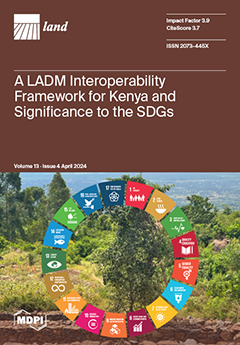The concept of soil quality (SQ) is defined as the soil's capacity to function, which is commonly assessed at the field scale. Soil quality is composed of inherent (soil suitability) and dynamic (soil health, SH) SQ, which can also be analyzed using geospatial
[...] Read more.
The concept of soil quality (SQ) is defined as the soil's capacity to function, which is commonly assessed at the field scale. Soil quality is composed of inherent (soil suitability) and dynamic (soil health, SH) SQ, which can also be analyzed using geospatial tools as a SQ continuum (SQC). This study proposes an innovative spatiotemporal analysis of SQ degradation and emissions from land developments using the state of Iowa (IA) in the United States of America (USA) as a case study. The SQ degradation was linked to anthropogenic soil (SD) and land degradation (LD) in the state. More than 88% of land in IA experienced anthropogenic LD primarily due to agriculture (93%). All six soil orders were subject to various degrees of anthropogenic LD: Entisols (75%), Inceptisols (94%), Histosols (59%), Alfisols (79%), Mollisols (93%), and Vertisols (98%). Soil and LD have primarily increased between 2001 and 2016. In addition to agricultural LD, there was also SD/LD caused by an increase in developments often through urbanization. All land developments in IA can be linked to damages to SQ, with 8385.9 km
2 of developed area, causing midpoint total soil carbon (TSC) losses of 1.7 × 10
11 kg of C and an associated midpoint of social cost of carbon dioxide emissions (SC-CO
2) of $28.8B (where B = billion = 10
9, USD). More recently developed land area (398.5 km
2) between 2001 and 2016 likely caused the midpoint loss of 8.0 × 10
9 kg of C and a corresponding midpoint of $1.3B in SC-CO
2. New developments are often located near urban areas, for example, near the capital city of Des Moines, and other cities (Sioux City, Dubuque). Results of this study reveal several different kinds of SQ damage from developments: loss of potential for future C sequestration in soils, soil C loss, and “realized” soil C social costs (SC-CO
2). The state of IA has very limited potential land (2.0% of the total state area) for nature-based solutions (NBS) to compensate for SD and LD. The results of this study can be used to support pending soil health-related legislation in IA and monitoring towards achieving the Sustainable Development Goals (SDGs) developed by the United Nations (UN) by providing a landscape-level perspective on LD to focus field-level initiatives to reduce soil loss and improve SQ. Future technological innovations will provide higher spatial and temporal remote sensing data that can be fused with field-level direct sensing to track SH and SQ changes.
Full article





